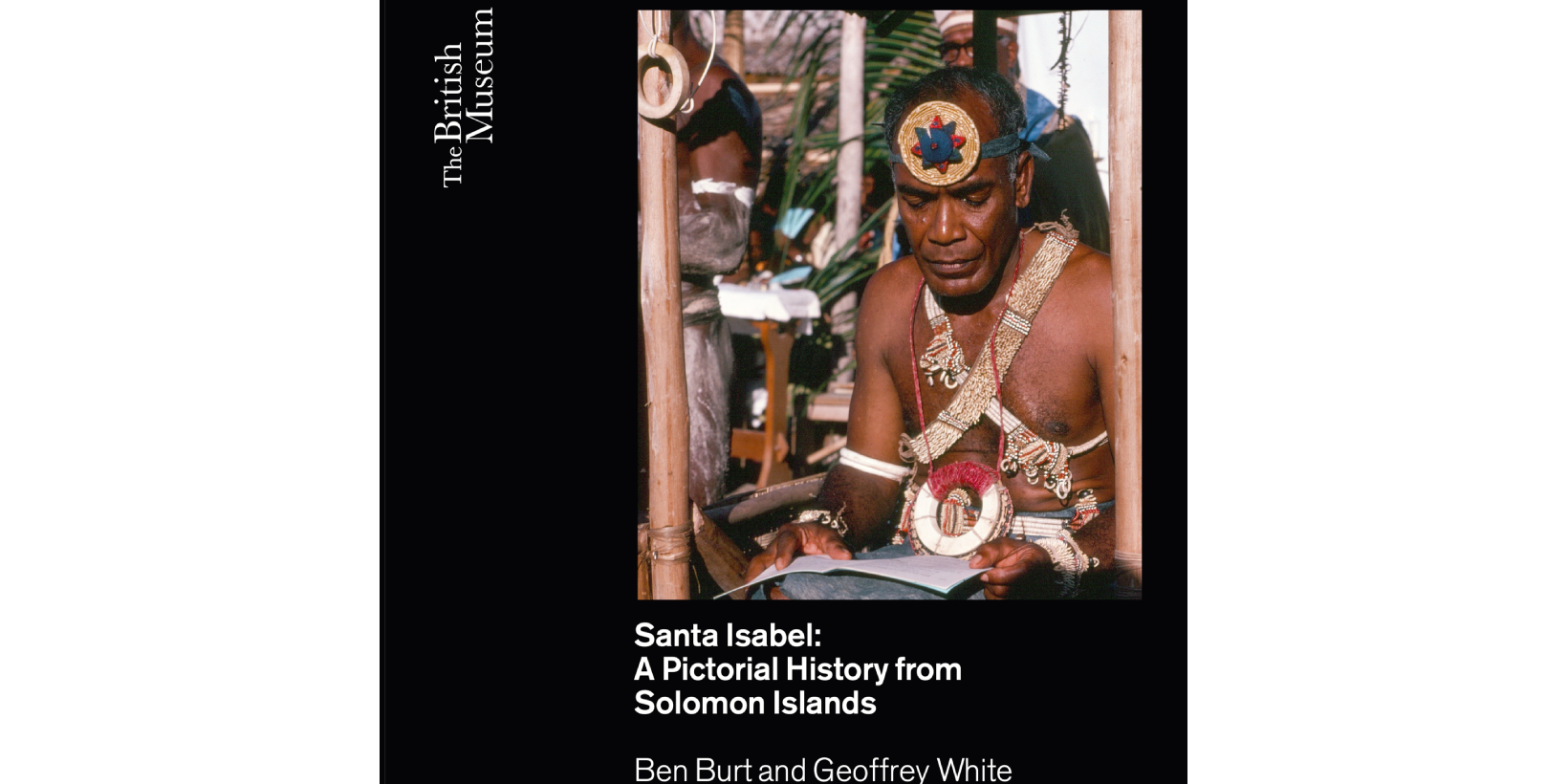A new book about Isabel Island was recently published by the British Museum.
Called ‘Santa Isabel: A Pictorial History from Solomon Islands,’ it features many pictures which help tell the story of the Isabel Island and provides fascinating new insights into the history of a Pacific island.
The book was written by Ben Burt and Geoffrey White.
This portrait of Santa Isabel in Santa Isabel: A Pictorial History from Solomon Islands is an image-led and accessible book which provides fascinating new insights into the history of a Pacific island.
This portrait of Santa Isabel in over 600 pictures shows an island transformed by its colonial history yet maintaining a confident and distinct identity within Solomon Islands and the Pacific Island region.
Santa Isabel is one of the largest islands that make up the island nation of Solomon Islands in the southwest Pacific. Politically it is now one of nine provinces, each with its own variation of a shared history.
In a country divided among many Christian denominations, Isabel is distinctive for its early acceptance of the Anglican Church, which united most of the island and its six language groups by the 1920s and then shaped its history up to the present.
This book traces Santa Isabel history through a selection of the many hundreds of pictures of the island first made by Europeans and increasingly by its own people.
These begin with the drawings and paintings of voyagers from the late 18th century, gradually succeeded by photos from the 1860s onwards showing the arrival of missionaries, traders and warships.
From the 1900s there are photos made by the Europeans who established plantations on Isabel and colonial officers asserting British colonial authority.
However, the pictorial record is dominated by photos from the Anglican Melanesian Mission. The Second World War, portrayed mainly by military photos, was followed closely by economic and political developments leading up to Solomon Islands independence in 1978 – developments portrayed in both church and government photos.
Photos of more recent social, ceremonial and political activities show the unique combination of church, chiefs and local government in Isabel life.
A renewed interest in local culture in the 21st century is revealed through photos of festivals and cultural research by both visiting and local researchers as Isabel people explore the possibilities of tourism, resource extraction and environmental conservation.
Following on from the 2015 British Museum research publication Malaita: A Pictorial History this book is an essential reference for researchers, students and general readers with an interest in the anthropology and history of Melanesia and the Pacific Islands.
shows an island transformed by its colonial history yet maintaining a confident and distinct identity within Solomon Islands and the Pacific Island region.
Santa Isabel is one of the largest islands that make up the island nation of Solomon Islands in the southwest Pacific. Politically it is now one of nine provinces, each with its own variation of a shared history. In a country divided among many Christian denominations, Isabel is distinctive for its early acceptance of the Anglican Church, which united most of the island and its six language groups by the 1920s and then shaped its history up to the present.
This book traces Santa Isabel history through a selection of the many hundreds of pictures of the island first made by Europeans and increasingly by its own people.
These begin with the drawings and paintings of voyagers from the late 18th century, gradually succeeded by photos from the 1860s onwards showing the arrival of missionaries, traders and warships. From the 1900s there are photos made by the Europeans who established plantations on Isabel and colonial officers asserting British colonial authority.
However, the pictorial record is dominated by phots from the Anglican Melanesian Mission. The Second World War, portrayed mainly by military photos, was followed closely by economic and political developments leading up to Solomon Islands independence in 1978 – developments portrayed in both church and government photos.
Photos of more recent social, ceremonial and political activities show the unique combination of church, chiefs and local government in Isabel life. A renewed interest in local culture in the 21st century is revealed through photos of festivals and cultural research by both visiting and local researchers as Isabel people explore the possibilities of tourism, resource extraction and environmental conservation.
Following on from the 2015 British Museum research publication Malaita: A Pictorial History this book is an essential reference for researchers, students and general readers with an interest in the anthropology and history of Melanesia and the Pacific Islands.
Printed copies of the book are available from the British Museum but a Pdf version of the book is available as a free download here: https://britishmuseum.iro.bl.uk/concern/books/79d19398-28f5-4841-aba4-cab2ac63fb13?locale=en









